Rana Plaza
description: an eight-story commercial building in Bangladesh that collapsed in 2013, causing widespread death and injury, highlighting poor working conditions in the garment industry
20 results

We Are All Fast-Food Workers Now: The Global Uprising Against Poverty Wages
by
Annelise Orleck
Published 27 Feb 2018
And there was.10 CHAPTER 25 “WE ARE NOT A POCKET REVOLUTION” Bangladeshi Garment Workers Since Rana Plaza IN THE MONTHS AFTER RANA PLAZA, Bangladesh garment workers continued to push for victim compensation and a living wage. Fifty thousand workers led by Nazma Akhter shut down six hundred factories, demanding a raise from $38 to $100 per month. They had not had a raise in three years. “We are not asking for mercy,” said Akhter. “Our labor moves this economy.” They also demanded compensation for Rana Plaza and Tazreen victims, and criminal charges against their owners. In an export zone outside Dhaka, ten thousand women went rogue and vandalized factories.1 In December 2013, the government conceded, raising the minimum wage from $34 to $68 per month.
…
Five months after the Rana Plaza factory collapse, the worst disaster in the history of the garment trades, a group of top-tier models were picketing and chanting: “Nautica, Nautica, you can’t hide. We can see your greedy side.” Some carried photographs of injured Bangladeshi workers. “No one should die for fashion!” they shouted. “Nautica, don’t throw workers overboard! End death traps now: Sign the Bangladesh Fire and Safety Accord.”1 Factory disasters were nothing new in Bangladesh. There had been hundreds of fires during the twenty-first century, claiming thousands of lives. But the Rana Plaza building collapse on April 24, 2013, had changed the global discussion, when 1,134 workers were killed and 2,500 more injured.
…
They are endemic to twenty-first-century garment work.2 Ziff was radicalized by the Rana Plaza collapse. Afterward, she traveled to Bangladesh, met Akter, and interviewed survivors. “As the faces of the fashion industry,” Ziff said, “models are in a unique and powerful position to promote decent working conditions not only for themselves but also for the women who make the clothes that we wear.” Models picketing Fashion Week chanted: “Exploitation is not a good look.”3 The scale of the carnage after the Rana Plaza collapse struck workers, consumers, and activists worldwide, evoking horror and sparking anger.
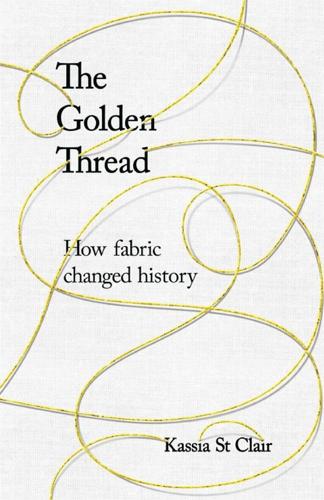
The Golden Thread: How Fabric Changed History
by
Kassia St Clair
Published 3 Oct 2018
And yet in 2013 it was the world’s second largest clothing exporter behind China; some five thousand factories employed 3.2 million workers, many of them women. After Rana Plaza, exports actually rose 16 per cent to 23.9 billion dollars.46 Cheap and plentiful labour – the minimum wage at the time of the accident was just thirty-seven dollars a month – makes it a popular place for large western brands to outsource production. Labels found amidst the Rana Plaza wreckage included Primark, Mango, Walmart and Benetton. Despite the presence of such large and profitable companies, redress for those affected by the disaster was slow in coming.
…
Humbert, p. 151. 40Ibid., p. 157. 41Ibid., pp. 151, 155, 173. 42Ibid., p. 151. 43‘Bangladesh Factory Collapse Death Toll Tops 800’. 44Ali Manik and Yardley, ‘Building Collapse in Bangladesh’; Devnath and Srivastava. 45Ali Manik and Yardley, ‘17 Days in Darkness’; The Editorial Board; Estrin. 46‘Rana Plaza Collapse’. 47Ali Manik and Yardley, ‘Building Collapse in Bangladesh’; The Editorial Board; Amy Kazmin, ‘How Benetton Faced up to the Aftermath of Rana Plaza’, the Financial Times, 20 April 2015 <https://www.ft.com/content/f9d84f0e-e509-11e4-8b61-00144feab7de> [accessed 4 October 2017]. 48Schlossberg; Lenzing Group; Scott Christian. 49Meyer. 50Tatiana Schlossberg.
…
doc=Perseus%3atext%3a1999.02.0137> Plutarch, Isis and Osiris (Part 1 of 5), 5 vols (Loeb Classical Library, 1936), i <http://penelope.uchicago.edu/Thayer/e/roman/texts/plutarch/moralia/isis_and_osiris*/a.html> [accessed 25 May 2017] Polo, Marco, The Travels of Marco Polo, ed. by Hugh Murray, 3rd edn (Edinburgh: Oliver & Boyd, 1845) Power, Eileen, The Wool Trade in English Medieval History, Third (London: Oxford University Press, 1941) ‘Prison Labour Is a Billion-Dollar Industry, with Uncertain Returns for Inmates’, The Economist, 16 March 2017 <https://www.economist.com/news/united-states/21718897-idaho-prisoners-roast-potatoes-kentucky-they-sell-cattle-prison-labour> Prude, Jonathan, ‘To Look Upon the “Lower Sort”: Runaway Ads and the Appearance of Unfree Laborers in America, 1750–1800’, The Journal of American History, 78 (1991), 124–59 <https://doi.org/10.2307/2078091> ‘Public Sentiment’, Southern Banner (Athens, Georgia, 24 August 1832), p. 1 R ‘Rana Plaza Collapse: 38 Charged with Murder over Garment Factory Disaster’, the Guardian, 18 July 2016, section World news <http://www.theguardian.com/world/2016/jul/18/rana-plaza-collapse-murder-charges-garment-factory> [accessed 4 October 2017] Raszeja, V. M., ‘Dennis, Clara (Clare) (1916–1971)’, Australian Dictionary of Biography <http://adb.anu.edu.au/biography/dennis-clara-clare-9951> Reeves, Nicholas, ‘The Burial of Nefertiti?’

Limitarianism: The Case Against Extreme Wealth
by
Ingrid Robeyns
Published 16 Jan 2024
Here’s the full list of brands: Benetton (Italy), Bonmarché (UK), Cato Fashions (USA), the Children’s Place (USA), El Corte Inglés (Spain), Joe Fresh (Loblaw, Canada), Kik (Germany), Mango (Spain), Matalan (UK), Primark (UK/Ireland), and Texman (Denmark). 24. On the fund, see cleanclothes.org/news/2015/04/17/ccc-believes-benettons-1-1-million-usd-contribution-insufficient. On the garment industry ten years after the Rana Plaza disaster, see Olivia Rockeman, “A Decade After the Rana Plaza Collapse, Garment Workers Are Still Exploited,” Bloomberg, April 19, 2023, bloomberg.com/news/articles/2023-04-19/rana-plaza-collapse-a-decade-on-garment-workers-still-exploited. 25. On Amazon becoming the largest public company in 2019, see James Dean, “Amazon Takes Title of World’s Biggest Company for First Time,” The Times, January 8, 2019, thetimes.co.uk/article/amazon-takes-title-of-world-s-biggest-company-for-first-time-6k3dhlwz3.
…
A total of 1,134 workers were killed, and nearly 2,600 were injured, many for life; in some cases, they could only be rescued by amputating limbs. The International Labour Organization set up the Rana Plaza Donors Trust Fund, to compensate victims and their families and cover medical costs and lost income. Many of the well-known brands that sell their clothes across the Global North had their garments produced in Rana Plaza, including Benetton, the Children’s Place, and Primark.23 According to the Clean Clothes Campaign, only Primark and Loblaw stepped up in any meaningful way; other companies, like Walmart, contributed the minimum amount to the relief fund; while Benetton paid much less than what was requested ($1.1 million instead of $5 million), and then only after a worldwide campaign by activists and unions.
…
How Lies, Loopholes and Lobbyists Make the Rich Even Richer 69, 127, 169 pensions xix, 13, 92, 170, 183 philanthropy 53, 92, 114, 164–86 crowdfunding 178 crowding out effect 176 democracy and 175–9 dirty money and 166 discovery argument 177–8 donation level 184–6 effective altruism movement 179 efficiency and 170–1 Feeney and xxiii, 164–7, 218 Good Ancestor Movement 183, 192 government and 167–79, 181 pluralism argument 177 power asymmetry and 179 principled justification 176 “rules”/blueprints for dynastic wealth and 172 small donors 181 structural change and 180 tax and 164, 166–8, 172, 173, 175–6, 180, 186 Piketty, Thomas: Le Capital au XXle siecle, or Capital in the Twenty-First Century 2, 21, 27, 97, 107, 226 Pizzigati, Sam: The Case for a Maximum Wage 224 platform economy 210 Plato: The Laws 189 pluralism argument 177 Politkovskaya, Anna 50 political limit xix, 15–16, 25, 116, 126, 161, 228 Polk, Sam 198 polluter pays principle 103–4, 106 Polman, Paul 86 populism 190 Porter, Henry 87 poverty China, decline in poverty in 2, 20 climate change and 79, 97, 114 Covid–19 pandemic (2020–22) and 18 definition of 149–50 developing countries and 29 elimination of xv, 36 entrepreneurs and 91 extreme 2, 18–20, 48, 79, 140, 141, 149, 153 globalization and 20–24 importance of 36–7 income/basic income and 150–52 inequality and xii, 35–7 instrumental/intrinsic importance of 36 kleptocracy and 47, 49 levels of 2, 18–23 line 10–11, 13, 19–20, 115, 146–7, 150 London living standards and 10–11 Oxfam report on inequality and 3, 17 pensions and 13 philanthropy and 168, 176 “relative poverty” measure 36 rich economies and 155 richest people worldwide, distribution of and 24 “self-made” rich and 5 USA distribution of wealth and 26–27 power asymmetry 179 Primark 58 principled justification 176 private jets 11, 101, 103, 115 profits 9, 23, 35, 42, 43, 45, 46, 47, 54, 70, 88, 92, 93 climate change and 97–8, 101, 103–4, 106, 114 Davos Men and 92, 93 dirty money and 43, 54 entrepreneurs and 133–7 fair division of 59 historic crimes and 46 neoliberalism and 35 non-profit organization xxiii, 177, 211 profit margins 157 profit-maximizing 88, 156, 170 “profits before people” philosophy 57 profit-seeking 9, 170, 209, 211 shifting 66 tax and 65–7, 124, 145, 160, 161, 222 propaganda 89, 180 property 4, 13, 48, 149 climate change and 99 inheritance and 124 Plato on limits to 189 private xx, 208, 209 property-owning democracy 213 public property transferred to private sector 209 rights 119–20 as social institution 118 tax 70, 118–20 prosperity theology 173 Protestant doctrine 173 public goods xx, 14, 34, 68, 119, 137, 146, 163, 168, 177, 209, 211 public–private partnerships 42, 103, 167 purchasing-power parity 19–20 Purdue Pharma 52–4 Putin, Vladimir 9, 49–50, 63, 76 quality of life 1, 14, 18, 41, 77, 146, 152, 171, 182 Quiggin, John 39–40 race 28–9, 194 racism 31, 88, 155, 174, 175, 191–2 Ramaswamy, Vivek xxv Rana Plaza disaster, Dhaka, Bangladesh (2013) 57–8 Rana Plaza Donors Trust Fund 58 Rawls, John 130 Raworth, Kate 213–4 Reagan, Ronald 33, 173 recessions xxi, 18 referenda 224 refugees 79–80, 158 regulative ideal xiv–xv, 214 Reich, Rob 32–33, 45; Just Giving 175–8 renewable energies 96, 105, 115, 158 rent-seeking 128–9 Republican Party xxv, 81, 87–8, 90 Resource Generation 8–9, 32 rich definition of 10–16 “too rich” xii, xviii, 13 See also super-rich riches line 10–16, 41, 117, 182–4, 186 rich lists ix–x, 2, 133 Romney, Mitt 169–70 Ronaldo, Cristiano 126 Roser, Max 18 Rowling, J.

Border and Rule: Global Migration, Capitalism, and the Rise of Racist Nationalism
by
Harsha Walia
Published 9 Feb 2021
Chapter 3 1.Sini Saaritsa, Janne Hulkkonen, and Carry Sommers, “Rana Plaza—The Survivors’ Stories,” Fashion Revolution, October 2018, www.fashionrevolution.org/rana-plaza-the-survivors-stories/. 2.Amirul Haque Amin, “Workers of the World Unite,” National Garment Workers Federation, May 29, 2017, www.ilo.org/wcmsp5/groups/public/---asia/---ro-bangkok/---ilo-jakarta/documents/presentation/wcms_555941.pdf. 3.War on Want, Stitched Up: Women Workers in the Bangladeshi Garment Sector, 2011, https://waronwant.org/sites/default/files/Stitched%20Up.pdf. 4.Dana Thomas, “Why Won’t We Learn from the Survivors of the Rana Plaza Disaster?,” New York Times, April 24, 2018, www.nytimes.com/2018/04/24/style/survivors-of-rana-plaza-disaster.html. 5.World Bank, “Export Processing Zones,” Policy and Research Series 20 (Washington, DC: World Bank, Industry Development Division of Industry and Energy Department, Trade Policy Division of Country Economics Department, 1992). 6.Mike Davis, Planet of Slums (London and New York: Verso, 2006), 158. 7.Lisa Duggan, Twilight of Equality: Neoliberalism, Cultural Politics, and the Attack on Democracy (Boston: Beacon Press, 2003), 3. 8.John Chalmers, “Special Report: How Textile Kings Weave a Hold on Bangladesh,” Reuters, May 2, 2013, www.reuters.com/article/us-bangladesh-garments-special-report/special-report-how-textile-kings-weave-a-hold-on-bangladesh-idUSBRE9411CX20130502. 9.Debabrata Mondal, “Bangladesh, Global Capitalism, and the Garment Industry,” Sanhati, November 24, 2009, http://sanhati.com/excerpted/6726/. 10.Naomi Klein, The Shock Doctrine: The Rise of Disaster Capitalism (Toronto: Alfred A.
…
CHAPTER 3 Dispossession, Deprivation, Displacement: Reframing the Global Migration Crisis Rupaly was one of thousands of workers hesitant to go to work on April 24, 2013, in the Rana Plaza building in Bangladesh’s Dhaka District. Employed in a garment factory, she and other workers were uncomfortable with deep cracks in the walls of the dilapidated building. A government safety inspector had ordered an evacuation a day earlier, but the manager tried to convince employees it was safe and threatened to withhold wages from anyone who refused to work.1 A few hours later, the Rana Plaza building collapsed. Rupaly and others were miraculously rescued from the rubble of the eight-story building, amid piles of bright cloth, but 1,130 garment workers were killed.
…
In 2018, as many as 3,793 Bangladeshi workers died overseas, mostly from work-related injuries.40 The same year, a series of worker actions took place against the garment industry in Bangladesh, resulting in charges against 3,000 workers and terminations of 11,600 workers in one hundred garment manufacturing units.41 Across from Rana Plaza, a memorial has been erected. In stark contrast to the edifice of greed that is every sweatshop, this monument is two calloused fists raised high, holding a hammer and sickle. Global Dispossession through Land Grabs and Climate Change The total number of migrants worldwide has reached 272 million, 3.5 percent of the world’s population, of which 70.8 million are forcibly displaced people.42 More than half of all refugees tracked by the United Nations High Commissioner for Refugees (UNHCR) are from Syria, Afghanistan, and South Sudan.
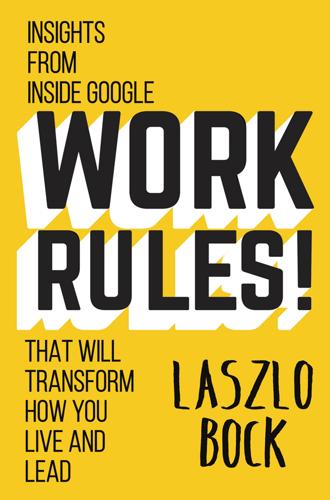
Work Rules!: Insights From Inside Google That Will Transform How You Live and Lead
by
Laszlo Bock
Published 31 Mar 2015
Ishan elaborated how this happens: “When employees trust the leadership, they become brand ambassadors and in turn cause progressive change in their families, society, and environment. The return on investment to business is automatic, with greater productivity, business growth, and inspired customers.” Contrast Brandix’s approach with the collapse of the Rana Plaza building in Bangladesh on April 24, 2013. Five apparel manufacturers, a bank, and several shops filled the eight-floor building. The day before, Rana Plaza was evacuated as cracks appeared in the walls. The next day, the bank and shops told their employees to stay away. The apparel companies ordered their workers back in. More than 1,100 people lost their lives, including children who were in a company nursery in the building.13 Closer to home, the 1999 film Office Space, which deadpanned the meaningless rituals and bureaucracy of a fictional technology company, became a cult hit because it was instantly recognizable.
…
“Wegmans Announces Record Number of Employee Scholarship Recipients in 2012,” Wegmans, June 7, 2012, www.wegmans.com/webapp/wcs/stores/servlet/PressReleaseDetailView?productId=742304&storeId=10052&catalogId=10002&langId=-1. 13. Sarah Butler and Saad Hammadi, “Rana Plaza factory disaster: Victims still waiting for compensation,” theguardian.com, October 23, 2013, http://www.theguardian.com/world/2013/oct/23/rana-plaza-factory-disaster-compensation-bangladesh. 14. Office Space, directed by Mike Judge (1999; 20th Century Fox). 15. Richard Locke, Thomas Kochan, Monica Romis, and Fei Qin, “Beyond Corporate Codes of Conduct: Work Organization and Labour Standards at Nike’s Suppliers,” International Labour Review 146, no. 1–2 (2007): 21–40. 16.

Makers and Takers: The Rise of Finance and the Fall of American Business
by
Rana Foroohar
Published 16 May 2016
The spate of disasters at BP is one example, but a more recent and even more devastating event in terms of lives lost was the 2013 disaster at the Rana Plaza garment-making complex in Bangladesh. Of the 3,500 workers who labored there to churn out cheap clothing for brands like Walmart, more than 1,100 died when a poorly constructed factory collapsed on top of them. As it turned out, the cause wasn’t just a lack of adequate safety standards in Bangladesh (though that was part of the story). The complexity that outsourcing introduces into the supply chain was also at play. In the aftermath of the collapse, Walmart claimed that it didn’t even know Rana Plaza was used to make girls’ jeans it was planning to sell.
…
But the financialization of the American economy is the third major, unacknowledged factor in slower growth, and it engages with the other two in myriad destructive ways. Finance loves outsourcing, for example, since pushing labor to emerging markets reduces costs. But financiers rarely think about the risks that offshoring adds to supply chains—risks tragically evidenced in events like the 2013 collapse of the Rana Plaza textile manufacturing center in Bangladesh, which killed more than a thousand garment workers who spent their days stitching T-shirts and jeans for companies like Walmart, Children’s Place, and JCPenney in buildings that weren’t up to code. Finance also loves the cost savings inherent in technology.
…
In the aftermath of the collapse, Walmart claimed that it didn’t even know Rana Plaza was used to make girls’ jeans it was planning to sell. (After documents surfaced showing that its Canadian supplier had indeed ordered pants from Rana Plaza, that firm blamed a “rogue employee” for filing the order.)30 The revelations were all the more unsettling given that just eight months prior, Walmart-bound apparel had turned up in another disaster-stricken Bangladeshi factory, after a fire there had killed 120 people. In that instance, too, Walmart’s supplier had farmed its work out to even cheaper, black-market subcontractors. Walmart was left holding the bag, paying out millions in compensation while it tries desperately to repair its reputation and ward off lawsuits.

The Age of Stagnation: Why Perpetual Growth Is Unattainable and the Global Economy Is in Peril
by
Satyajit Das
Published 9 Feb 2016
The reasons lie in the relationship between developed and emerging economies. In April 2013, Rana Plaza, an eight-story complex of clothing factories near Dhaka in Bangladesh, collapsed, killing more than 1,100 people. It followed an earlier fire at Tazreen Fashions, another Dhaka factory, which killed more than one hundred. In 2010, a number of workers at a Foxconn electronics factory in China, a supplier to Apple, committed suicide. These incidents are only a miniscule part of the human cost of low-cost manufacturing in emerging markets. The proximate cause of the Rana Plaza collapse was clear. The original 2006 approval was for a five-story building, which was correctly designed and constructed.
…
Return on investment in the garment trade has decreased from 50 to 20 percent, which is close to the cost of debt in Bangladesh. In turn, this drives further cost-reduction measures. The problems are compounded by weak government, corruption, rent-seeking, and poor administration. Bangladeshi building regulations are not enforced. Trade unions are aggressively suppressed. The owner of Rana Plaza was linked with one of Bangladesh's major political parties and allegedly used his influence to obtain approvals from the authorities, even though the building extensions did not comply with standards. The same pattern, repeated across countries and industries, relies on what Palestine-born writer Edward Said in 1978 termed Orientalism.

The Fissured Workplace
by
David Weil
Published 17 Feb 2014
Notably, the facility provided products for a number of major U.S. brands and retailers and had been covered by a workplace monitoring arrangement with Walmart, one of its major customers.48 Less than six months later, in April 2013, a multistory building in Savar, Bangladesh, collapsed, killing 1,127 people who worked in the numerous apparel manufacturing companies located in it. The Rana Plaza complex collapse was the deadliest accident in the history of the garment industry. Apparel contractors in the building produced goods destined for such global brands as Walmart, Benetton, the Children’s Place, and British retailers Bonmarché and Primark.49 Global supply chains give rise to benefits to the companies that draw upon them, the consumers who purchase goods produced through them, and the workers who are employed as part of them.
…
But given their deep integration with the supply base and the essential strategic need to carefully prescribe, certify, and conduct ongoing monitoring of adherence to technical, quality, and delivery standards, it seems arbitrary to absolve those lead companies from responsibility for, at the very least, seeing that those suppliers adhere to the labor standards of their home country. The Apple/Foxconn story illustrates that lead firms can take more responsibility. The Tazreen and Rana Plaza tragedies exemplify the failure to do so. Any effort to address wage levels, health and safety, labor standards compliance, or other aspects of work must recognize that the modern workplace, as redrawn through the organizational forms discussed in Part II, looks less and less like the one enshrined in most public policies.
…
The policy changes at Foxconn, in particular, including substantial pay increases and reduction in work hour policies as well as efforts to improve health and safety outcomes, are notable, as are the resources and attention Apple and HP have devoted to developing better capacities to monitor and improve labor and environmental practices in their supply bases.37 At the same time, the death of more than five hundred Bangladeshi workers in factory fires between 2006 and 2012 and the collapse of the Rana Plaza factory complex leading to more than 1,100 fatalities in 2013, all in facilities primarily serving apparel export markets points to the continuing huge challenges faced in this arena. This point is underscored by the fact that most of those who died worked in factories that were technically covered by codes of conduct or some type of international monitoring arrangement.38 A complete discussion of the impact of codes of conduct, transparency, and voluntary monitoring occurring across the boundaries of national workplace policies raises issues beyond the scope of this book and requires separate assessment.39 But several general points about recent efforts to address this particular driver of fissured workplaces can be made here.
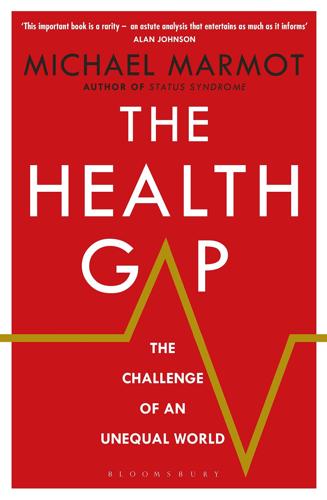
The Health Gap: The Challenge of an Unequal World
by
Michael Marmot
Published 9 Sep 2015
Well, perhaps not literally those very garments, but ones very much like those were made in the factories where my friends and I work. Cue guilt feelings on the part of the Americans and Europeans. It is difficult not to feel that our liking for cheap clothes is somehow linked to the collapse, in April 2013, of the garment factory at the Rana Plaza complex that killed 1,100 people and injured 2,500 more. Cheap clothes in London and New York mean rotten factory conditions and low pay in Dhaka, in Bangladesh. Like it or not, we are involved. The simple version of this is that we, in high-income countries, export low pay and sweatshop working conditions to Bangladesh and Bangladesh exports affordable clothing to us – globalisation at work.
…
One garment worker, a woman in her forties from a rural background, saw her daughter go to college. Three generations: rural poor, urban factory worker, college graduate. That is not to say that any of us who has bought a garment made in Bangladesh should be relaxed about the working conditions in which it was produced. The Rana Plaza incident brought much-needed attention to the question of working conditions in Bangladesh’s garment industry. There are power asymmetries at work here. If Bangladesh starts to get more organised about pay and working conditions, multinational corporations can simply shift their business elsewhere, to the detriment of Bangladesh’s economy and of the women who gladly see the work as empowering them.
…
Available from: http://www.sulabhinternational.org/admin/config/media/file-system/Summary%20of%20the%20Case%20Study-Sulabh%20International-A%20Movement%20to%20Liberate%20Scavengers%20by%20Implementing%20a%20Low-Cost%2C%20Safe%20Sanitation%20System-by%20UNDP.pdf. 3Franco G. Ramazzini and workers’ health. Lancet. 1999; 354(9181): 858–61. 4Ibid. 5Eurofound. Fifth European Working Conditions Survey. Luxembourg: Publications Office of the European Union, 2012. 6Ibid. 7Butler S. Bangladesh garment workers still vulnerable a year after Rana Plaza. The Guardian. 24 April 2014. 8International Labour Organisation. ILO Introductory Report: Global Trends and Challenges on Occupational Safety and Health. 2011. 9Marmot MG, Rose G, Shipley M, Hamilton PJS. Employment grade and coronary heart disease in British civil servants. Journal of Epidemiology and Community Health. 1978; 32: 244–9. 10Marmot MG, Davey Smith G, Stansfeld SA, Patel C, North F, Head J, et al.
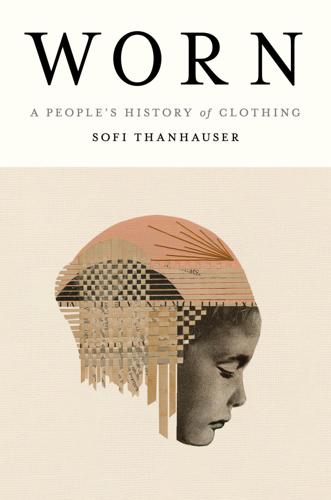
Worn: A People's History of Clothing
by
Sofi Thanhauser
Published 25 Jan 2022
In every case, the companies sourcing from the factories were major European and North American brands. Each of these brands had codes of conduct with “specific references to safety standards and expectations of compliance among their contractors.” Clearly, these codes do little to protect workers. This became spectacularly clear on April 24, 2013, at Dhaka’s Rana Plaza, a complex that produces garments for Bon Marché, Primark, Carrefour, Benetton, Inditex, JCPenney, Walmart, Store Twenty-One, C&A, The Children’s Place, DressBarn, Essenza, FTA International, Iconix Brand, and Mango among others. That morning, a government engineer warned workers gathered outside the building that visible cracks in support columns showed that the building was not safe.
…
In the wake of the collapse, momentum was great enough to lead to the May 2013 Accord on Fire and Building Safety, currently signed by more than 150 global brands and retailers, by the powerful Bangladesh Garment Manufacturers and Exporters Association, and by two international union federations, IndustriALL and UNI. The accord was the product of a multiyear series of negotiations that only reached resolution in the immediate wake of the collapse in Rana Plaza. The accord rejected the voluntary Corporate Social Responsibility codes of conduct model and demanded, rather, that all signatories sign contracts that ensured joint financial responsibility between Bangladeshi manufacturers and the global brands and retailers that use them. Just like the contracts that the International Ladies’ Garment Workers’ Union had jointly signed with jobbers and manufacturers, ensuring that the former could not shunt responsibility for worker conditions to the latter, these were legally binding obligations.
…
W., 49 Potter, Orlando, 35 poverty, feminization of, 195, 219 Powder River Basin, 228–29, 230 private-label clothing lines, 206, 208 property rights of women, 16–17, 26–28, 27n prostitution, 38–39 Q Qin Dynasty, 106–7 Quant, Mary, 192–93 R racism in Southern U.S., 47, 54–56 Ramasamy, M., 69, 70–71 Rana Plaza (Dhaka), 220–21 Rare Breeds Parade, 256–57, 261–62 Rare Breeds Survival Trust, 250, 251, 257 Rayon and the Tariff: The Nature of an Industrial Prodigy (Taussig and White), 155–56 rayon production in American South, 161–69, 177–80 in Asia, 182 dangers of carbon disulfide from, 156–58, 160–61, 170–73, 172n, 173n, 180–82 development of, 153–55, 160 by Dupont, 156, 173n, 189 environmental degradation from, 168 in Europe, 154, 160, 162 labor exploitation in, 154, 156–57, 160–61, 170–73, 180–82 labor strikes in, 161–69, 177–80 lawsuit by worker in, 180–81 as multinational corporate enterprise, 155–56, 182 and munitions factories, 181 R.

Connectography: Mapping the Future of Global Civilization
by
Parag Khanna
Published 18 Apr 2016
For months prior, Chinese businessmen had been buying up as much Aptamil as they could from wholesale distributors and selling each carton for double the price on Taobao (the Chinese eBay) to mainland mothers concerned about the poor quality of Chinese baby formula (from which at least a dozen Chinese babies had died of poisoning). British pharmacies and grocery stores suddenly had to ration the popular baby formula. Maps 1, 24 and 25, corresponding to this chapter, appear in the map insert. On April 24, 2013, the upper floors of the Rana Plaza garment factory and apartment block in the Savar district of Dhaka, Bangladesh, collapsed and pulled down the whole building. When the search for survivors was called off one month later, 1,127 people were declared dead, making it the deadliest structural failure in history. While shoddy construction, corrupt management, poor regulation, and chaotic response are typical of the Bangladeshi manufacturing sector, the unprecedented scale of the tragedy and the factory’s customers—Primark, H&M, and Zara, among others—brought weeks of intense media scrutiny.
…
Even when e-commerce cuts out the traditional retailer or middleman, the sheer complexity of production and distribution of many high-tech products has required a near doubling of the number of transactions needed to create a finished product in the first place. Thus even as our concerns about supply chains increase, our dependence on them grows. It takes great care to trace and manage supply chains. The Rana Plaza garment factory in Dhaka was the epicenter of six layers of suppliers—clearly more than anyone realized or was actively managing. To ensure the thousands of uniforms they purchase every year are made sustainably, administrators and student delegations from United World Colleges (K–12) in Singapore travel to factories in interior Malaysia to monitor facilities’ compliance with World Responsible Accredited Production codes of conduct.
…
The Bangladesh garment factory and the jobs it creates might not have existed were it not for Western retailers, and its collapse would barely have been noticed by Western consumers were it not for their connection to those brands. Bangladesh’s new building code is being designed not by lax local authorities but by a consortium including seventy European companies whose reputations depend on avoiding a repeat of the Rana Plaza disaster. Similarly, a franchise business can be more accountable due to strict rules set forth by a powerful parent company. McDonald’s has more capacity to inspect itself, and more incentive to protect its brand, than any government can devote to monitoring it. Similarly, the West African societies where children work in cocoa fields don’t raise wages or build schools the way Nestlé can.*1 — SUPPLY CHAINS WERE ONCE thought of as spurring a race to the bottom; now it is clear they are how countries race to the top.
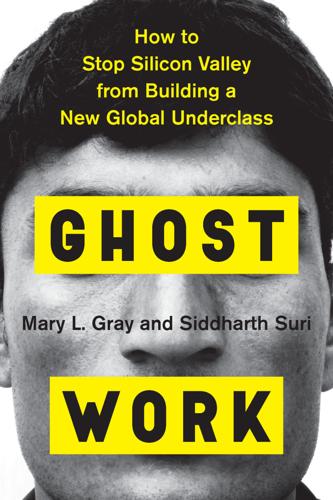
Ghost Work: How to Stop Silicon Valley From Building a New Global Underclass
by
Mary L. Gray
and
Siddharth Suri
Published 6 May 2019
It is a case of what can be done collaboratively by consumers, workers, growers, and corporate buyers to produce better outcomes for business, the consumer, and those generating value for them both through contract, seasonal jobs. Just as inspiring is the signing of Accord on Fire and Building Safety in Bangladesh, or the Bangladesh Accord. It followed the 2013 collapse of the Rana Plaza, in Bangladesh, the deadliest textile factory accident in history. The overcapacity facility, built with shoddy materials for nonindustrial use, with three illegal shop floors haphazardly tacked on to the building, crushed 1,100 workers to death and injured another 2,500. Five days later, protesters surrounded the central London Primark store to call out the company for being one of the hundreds of name-brand clothing manufacturers that had contributed to the negligence that resulted in the building’s collapse and so many deaths.
…
Months later, through the hard work of consumer boycotts and advocacy groups, in solidarity with unions representing Bangladeshi textile and garment workers, more than 200 brands agreed to acknowledge that because they profited from the labor these workers supplied and the value they created for their companies, they themselves bore responsibility for the safety of the workers in their supply chains. Companies like Aldi Nord, Aldi Süd, Primark, Puma, and American Eagle, all of whom used Rana Plaza to stitch together consumer goods, signed on. Even though some of the largest clothes makers using the plaza, like Walmart, Gap, Target, and Macy’s, refused to sign the legally binding agreements to improve safety and conditions for workers, many of their European counterparts did sign. The Fair Food Program and the Bangladesh Accord are beacons for how to hold all of us accountable to the workers in manufacturing supply chains of the past.
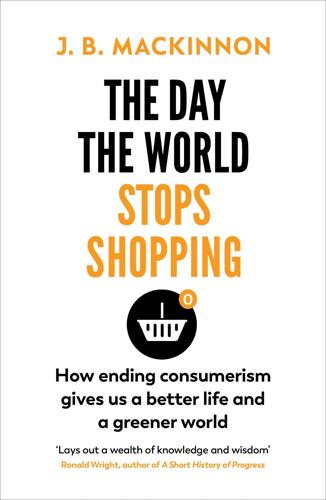
The Day the World Stops Shopping
by
J. B. MacKinnon
Published 14 May 2021
By far the worst chaos and loss, though, would fall on people in poorer nations who now make most of the world’s products and provide many of its services, too. Sarah Labowitz, a Houston-based human rights advocate, worked for years to improve conditions for such workers. When she visited Bangladesh after the Rana Plaza disaster of 2013, in which a factory collapse killed more than a thousand people making clothes for brands based in Britain, Spain, Italy, the US, Canada and beyond, Labowitz asked garment workers if they had a message for consumers in the West. “They would say, ‘Yes. Keep placing orders,’” Labowitz said.
…
See also planned obsolescence “occasional geniuses,” 238 Oe, Kenzaburo, 260 one-planet level, 35–36 one-planet lifestyle, 35 one-planet living, 33, 37 Oppenheim, Leonora, 115–18 “ordeal of performance,” 103 Organization for Economic Co-operation and Development, 150 Osram, 145 outdoor industry, 113 “outdoor rooms,” 37 overconsuming, 32, 90, 281 overconsumption, 10, 138, 290 “oversupply,” 111 Packard, Vance, 145 Paez, Fernanda, 31, 33–34, 36, 40–41 Pan-American Highway, 40 “pandemic pets,” 96 paradigm shift, 191 Paramus, New Jersey, 43–45, 50, 54 Partanen, Anu, 103–4 “participant observation,” 131 Participatory City Foundation, 188, 190 participatory culture, 188, 190–91, 193 Patagonia, 109–15, 139, 164–65, 175 Patagucci, 110 peer group influence, 100 “perceived time” approach, 180 “perfect tranquility,” 245–46 perpetual growth, 183, 219 personal growth, 125–26 Perth, Australia, 69–71, 77 Philips, 145 Phoebus, 145–46 Phoenix, Arizona, 24, 71, 139 pigeons, 231–32 Pike, Kenneth, 251 Piketty, Thomas, 86, 89 Pilling, David, 86 ping-pong balls, 61, 66 Planet America, 32 Planet Germany, 32 Planet Italy, 32 Planet Netherlands, 32 planned obsolescence, 29, 112, 145–48, 150, 220, 252 plastic, 1–2, 6, 10, Polar Furniture Enterprise, 131–133 Pollyannaism, 187 positional consumption, 101–2, 287 poverty, 34, 36, 85, 87, 89–90, 94, 103–4, 132, 135, 157, 264, 278 defining, 40 predictions, 232 versus simple life, 281 Pöyry, Varpu, 93–94, 105–6 prêt-à-jeter, 138 “primitive disaccumulation,” 133 Printers’ Ink, 146 product durability, 144, 149, 290 protest movement, 129, 291 psychology, and intrinsic values, 129 Pull & Bear, 157 Pynchon, Thomas, 146 Q’eqchi’ culture, 282–83 quality of life, 45, 175, 191, 217, 290 quarantine, 11, 53, 124, 126–27, 138, 249 Quito, Ecuador, 31, 33–34, 38, 40, 115 Rana Plaza disaster (2013), 27 Ratner moment, 18, 109 Ratner, Gerald, 18 Reagan, Ronald, 213 rebound effects, 215–20, 255 redistribution of wealth, term, 280, 290 Renaissance Italy, 165, 210, 219 “respending,” 215 retail apocalypse, 291 “retail therapy,” 103 Rhoades, Cyndi, 166–68 “right to repair,” 150 right whales and “marine roads,” 227 noise, effect on, 226 ship strike, 226 studying, 225–227 Rinderle, Amanda, 161–62, 288–89 Riyead, Fakir Wahiduzzaman, 159 Roaring Twenties, 20, 95 Robin, Vicki, 240 Roblox, 251 Rolland, Rosalind, 225 Roosevelt, Franklin, 84 Rousseau, 54 Ruben, Andy, 163–65, 294 running below capacity, 275–76, 278, Russia, 33, 39, 84, 95, 131–36 RVs, 23 sabbath, 14, 43–46, 48–9, 51–54, 267 Sado Island, 259–62, 264, 266–68, 270–72, 293 Sahlins, Marshall, 4–5, 275 sakoku (“closed country”), 175–76 sakura mochi, 171 Sandia National Laboratories, 144 savers, 216 Schlesinger, James, 21 Schor, Juliet, 100, 239 Schwieger, Sarah, 285 Science Advances, 70 “scramble,” 268 Sears, 159 Second Life, 253 Second World War, 20, 22, 47, 62, 73, 87, 93, 95, 98, 134, 170, 177, 187, 219 Seinfeld, 28 self-respect, complacency of, 101, 104 Sey, Jen, 137–39 sharing, 165, 279, 281–82 demand sharing, 280 sharing economy, 150, 191 word, 280 shatta-gai, 261 Shelby Electric, 143 Shi, David, 53 shikata ganai, 264 shinui, 46–47 shiyang, 20 sho, 273 shohi, 273 shopping.

Slow
by
Brooke McAlary
Published 22 Aug 2017
Take your purchasing power back from marketers and choose a product that will prove a good investment of time, money and resources. Buy ethically As well as quality in the product, consider what your purchase means for the quality of life of the people making it, and the impact on the environment. Ethical fashion and ethical manufacturing are blossoming sub-industries, partly spurred on by tragedies such as Bangladesh’s Rana Plaza disaster in 201, when more than 1100 garment workers making clothes for many well-known mainstream brands perished in a factory collapse. While this was an event that garnered a lot of attention simply because of the scale of the devastation, there are endless examples of similarly unsafe work conditions and unfair salaries for garment workers who bring us $5 T-shirts and jeans that cost less than a takeaway pizza.

Nine Pints: A Journey Through the Money, Medicine, and Mysteries of Blood
by
Rose George
Published 22 Oct 2018
It was named HERproject (in which HER stands for Health Enables Returns) and was a program run by Business for Social Responsibility, a membership organization of 250 companies worldwide that includes Microsoft, Sony, Pepsi, and Coca-Cola.67 Dhaka was an appropriate place for a business-backed project because many BSR members have their products made in Bangladesh’s five thousand garment factories. There are three million Bangladeshis working in the garment industry, and 80 percent are women. They are difficult to reach: the garment industry is suspicious of the press because the press reports things like the Rana Plaza factory building collapse in 2013, which killed 1,129 workers.68 Under the wings of HERproject, I was given access to a factory that I wasn’t allowed to name, on a street I couldn’t identify, run by companies I wasn’t permitted to mention who produced clothing for Western brands that had to remain anonymous.
…
pigeons Plan India plasma during Battle of Mogadishu cost of donors fractionation fresh frozen Krever Report on proteins in sale of source storage of transfusions of, statistics on in trauma during World War II Plasma for Britain program plasma industry plasma protein therapeutics Plasma Protein Therapeutics Association (PPTA) Plasma Resources UK Plasmafaresis plastic surgery, leeches used in platelets Pliny the Elder pluripotent stem cells Plymouth Hospital PMDD (premenstrual dysmorphic disorder) PMS (premenstrual syndrome) polar bears polycythemia vera PolyHeme Pope Innocent VIII postpartum hemorrhage poverty PRBCs (packed red blood cells) pre-exposure prophylaxis (PrEP) program pregnancy premenstrual dysmorphic disorder (PMDD) premenstrual syndrome (PMS) President’s Emergency Plan for AIDS Relief (PEPFAR) Prince Regent (future George IV) Principles and Practice of Obstetricy (Blundell) prisoners’ access to menstrual hygiene Prisoners’ Blood Bank for Defense Procter & Gamble prostate-specific antigen (PSA) PSA (prostate-specific antigen) Psychrolousia, or The History of Cold Bathing (Floyer) public executions Pybus, Miss Quebec Quick, Jonathan Racaniello, Vincent race, early blood segregation and Rana Plaza factory building collapse in 2013 RAND corporation rape Rath, Matthias rats Read, Sara REBOA (resuscitative endovascular balloon occlusion of the aorta) red blood cells bone marrow’s production of cost of Filton’s production of official shelf life of packed (PRBCs) presurgical conservation of shape of in sickle-cell anemia stored vs. fresh in trauma Red Cross Red Market, The (Carney) Red Star (Bogdanov) rejuvenation, blood Rely tampons Research and Markets resuscitation.
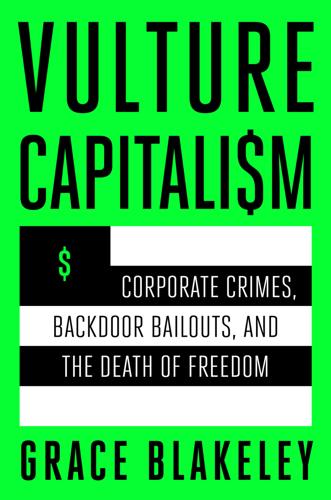
Vulture Capitalism: Corporate Crimes, Backdoor Bailouts, and the Death of Freedom
by
Grace Blakeley
Published 11 Mar 2024
Brandy Zadrozny, “ ‘Carol’s Journey’: What Facebook Knew about How It Radicalized Users,” NBC News, October 22, 2021, https://www.nbcnews.com/tech/tech-news/facebook-knew-radicalized-users-rcna3581. 3. John Smith, Imperialism in the Twenty-First Century: Globalization, Super-Exploitation and Capitalism (New York: Monthly Review Press, 2016); Sarah Butler and Thaslima Begum, “Abuses ‘Still Rife’: 10 Years on from Bangladesh’s Rana Plaza Disaster,” The Guardian, April 24, 2023, https://www.theguardian.com/world/2023/apr/24/10-years-on-bangladesh-rana-plaza-disaster-safety-garment-workers-rights-pay. 4. Viola Wohlgemuth, “How Fast Fashion Is Using the Global South as a Dumping Ground for Textile Waste,” Greenpeace, April 22, 2022, https://www.greenpeace.org/international/story/53333/how-fast-fashion-is-using-global-south-as-dumping-ground-for-textile-waste/. 5.

A Life Less Throwaway: The Lost Art of Buying for Life
by
Tara Button
Published 8 Feb 2018
The building was evacuated, but despite their protests, the garment workers were forced back to work the next morning, being told that they would lose a whole month’s pay if they refused to re-enter the building. At 8.57 a.m., with everyone inside, the building collapsed and 1,129 people were killed and over 2,500 were injured. This Rana Plaza tragedy captured the world’s attention for a few days, but the misery of what many call ‘modern-day slave labour’ has continued, with those who protest over their near-starvation wages and dangerous conditions being fired, beaten or arrested. What’s the answer? It’s hard to hold this kind of story in mind when you’re browsing for something pretty to wear on holiday.
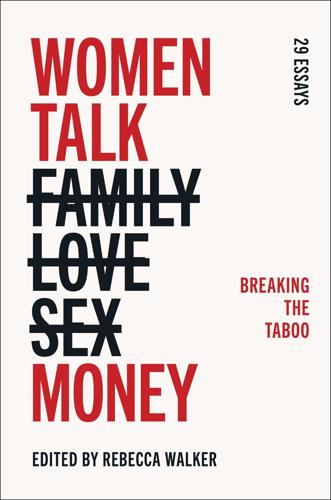
Women Talk Money: Breaking the Taboo
by
Rebecca Walker
Published 15 Mar 2022
My success was in large part due to my whiteness: in 2018, 66 percent of advertisements, 67.5 percent of runways, and 68.6 percent of magazine covers featured white models, and those numbers reflect a vastly more inclusive casting than when I started working eighteen years ago. My success reinforced white supremacy. I was on set the day of the Rana Plaza factory collapse. Sitting in hair and makeup, with the blow-dryer going too loud to make conversation, I read the day’s headline stories. More than a thousand people lost their lives and two thousand and five hundred more were injured in the collapse of a factory that made clothes like the ones we were selling.

Work Won't Love You Back: How Devotion to Our Jobs Keeps Us Exploited, Exhausted, and Alone
by
Sarah Jaffe
Published 26 Jan 2021
Yet even Amazon, in denying the reports of hellish conditions written up by journalist Emily Guendelsberger, touts its “passionate employees, whose pride and commitment are what make the Amazon customer experience great.” 9 The global pandemic in 2020 just made the brutality of the workplace more visible. The amount of people employed in manufacturing worldwide has shrunk, but still the work is done, and more and more of it for pennies and without union protections. Women and children labor in deadly conditions in factories in places like Bangladesh, where the Rana Plaza garment factory collapse in 2013 killed 1,132 workers and injured more than 2,000 more. The day-to-day conditions of Bangladeshi garment workers—or, say, the workers who assemble iPhones at the Foxconn plant in China—range from tedious to backbreaking to deadly. Few seriously expect such workers to like their jobs, though they might face pressure to smile for the factory inspectors on the rare occasions they come around. 10 Coal miners and factory workers have been described in many an article, laden with stereotypes, as Trump’s base, layering a thick sheen of romance over what was and remains miserable work.
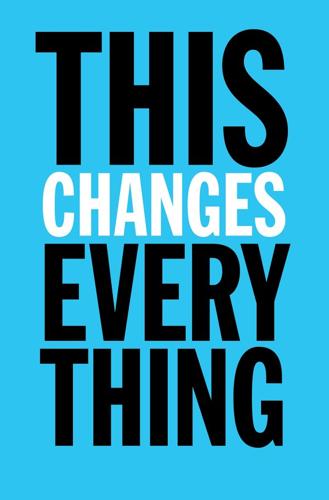
This Changes Everything: Capitalism vs. The Climate
by
Naomi Klein
Published 15 Sep 2014
Elisabeth Rosenthal, “Europe Turns Back to Coal, Raising Climate Fears,” New York Times, April 23, 2008; Personal email communication with IEA Clean Coal Centre, March 19, 2014. 41. Jonathan Watts, “Foxconn offers pay rises and suicide nets as fears grow over wave of deaths,” Guardian, May 28, 2010; Shahnaz Parveen, “Rana Plaza factory collapse survivors struggle one year on,” BBC News, April 23, 2014. 42. Mark Dowie, Losing Ground: American Environmentalism at the Close of the Twentieth Century (Cambridge, MA: MIT Press, 1996), 185-86; Keith Schneider, “Environment Groups Are Split on Support for Free-Trade Pact,” New York Times, September 16, 1993. 43.